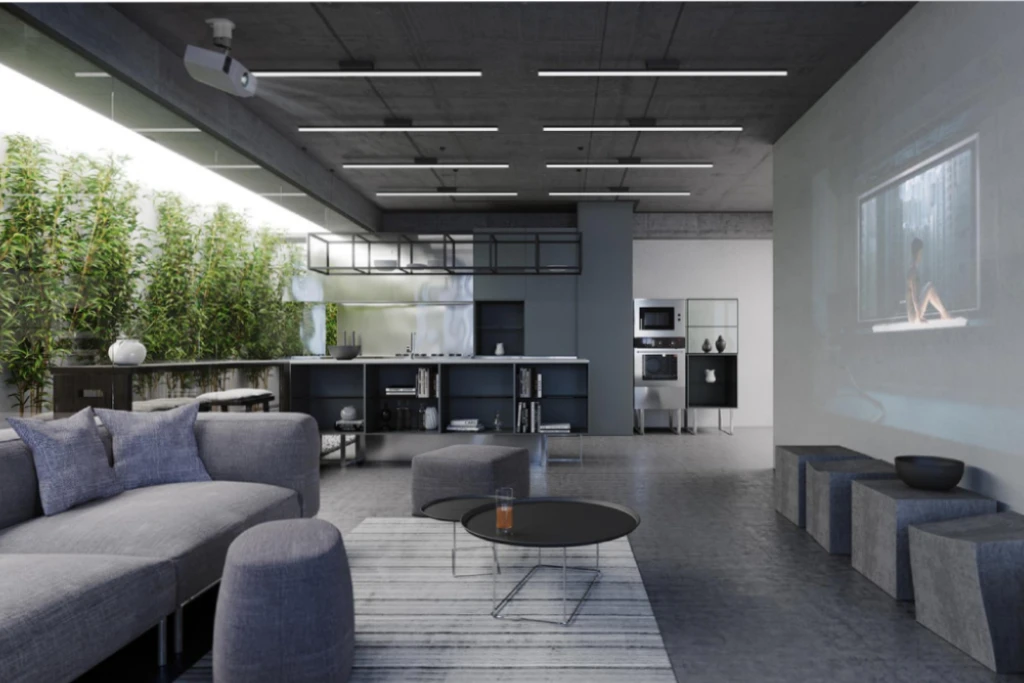Flexible Smart Office Spaces: The Future of Modern Workplaces

Modern workspaces are increasingly seeking an adaptive approach where the space evolves with their needs. Flexible smart office spaces are ideal for such use cases, blending flexibility and digital technology. As businesses increasingly shift toward a hybrid office design and employee-first models, flexible smart offices have become a powerful tool for productivity, well-being, and sustainability.
Flexible Smart Office Spaces: The Future of Modern Workspaces
Let’s dive deeper into what they are and how they are shaping the future of work:
What Are Flexible Smart Office Spaces?
A flexible smart office adapts to the changing needs of its users both physically and digitally. Its flexibility lies in its layout and function: modular furniture, movable walls, and convertible zones allow spaces to be reconfigured quickly for meetings, focused work, or collaboration. The smart aspect of it is the integrated technology, be it IoT sensors, automated climate control, and connected devices that learn user preferences.
Imagine a meeting room that automatically adjusts the lighting when occupied or a desk that remembers your ergonomic settings. These are the features that enhance the comfort, optimize resources, and align with how modern teams work efficiently.
Why Businesses Are Moving Toward Flexible Smart Offices
Ever since the pandemic accelerated hybrid work, companies realized that office flexibility is a long-term need, not a temporary solution. Flexible smart offices give businesses a space that scales with team size, adapts to project needs, and reduces overhead costs.
Smart technologies also improve sustainability and energy management by monitoring occupancy and automatically regulating systems. Beyond cost and efficiency, these offices enable the workers to personalize their environment, collaborate seamlessly, and work without the daily interruptions and inefficiencies that slow down traditional office work.
According to recent workspace studies, organizations implementing smart office solutions have reported higher employee satisfaction and up to 20-30% better space utilization. Read more about coworking office trends and insights.
Key Features of a Flexible Smart Office
A well-designed, flexible smart office connects design agility with digital intelligence. Here are the core features that make it work:
1. Modular Layouts
Spaces can shift from open collaboration zones to private pods within minutes using movable partitions and adaptable furniture. This dynamic setup keeps the office fluid and responsive. Explore coworking office layouts and designs for inspiration.
2. Smart Technology Integration
IoT sensors track occupancy and automate functions like lighting, temperature, and air quality. Smart booking systems ensure meeting rooms or desks are used efficiently.
3. Personalized Work Zones
Employees can customize their work environment, from lighting levels to desk height, promoting comfort and focus throughout the day.
4. Data-Driven Management
Real-time analytics help managers optimize space usage, energy consumption, and maintenance schedules.
5. Hybrid Collaboration Tools
Integrated video conferencing, wireless sharing, and digital whiteboards make teamwork seamless for both in-office and remote employees. Hybrid office design solutions are essential for modern workspaces.
Benefits for Employees and Businesses
For employees, flexible smart offices deliver autonomy and comfort. They can choose where and how they work. Smart personalization also supports wellness, adjusting air quality and lighting for optimal comfort.
For businesses, these offices improve productivity and reduce costs. Real-time data helps decision-makers plan layouts better, manage resources effectively, and downsize or expand without expensive redesigns.
From an HR perspective, such work environments are crucial in enhancing satisfaction and retention. Moreover, clients and visitors perceive a smart, adaptive office as a mark of innovation, strengthening the company’s brand image in the market. See a prime example of a coworking space in Mumbai.
Creating or Transitioning to a Flexible Smart Office
Transitioning to a flexible smart office does not require an overnight overhaul. Start by assessing how your current space is used, then identify underutilized areas or repetitive bottlenecks. After that, adopt modular furniture and adaptable layouts to encourage movement and choice. Introduce smart systems in phases, such as automated lighting, booking apps, or IoT-enabled devices, to integrate tech seamlessly.
Partnering with workspace providers or consultants specializing in smart design can simplify implementation and ensure sustainable growth. But here is the thing: the key is to blend technology and human experience so flexibility feels natural, not forced.
Conclusion
Flexible smart office spaces represent how modern work is evolving. When adaptability blends with intelligence, these spaces help businesses operate efficiently while keeping employees inspired and comfortable.
Future proof your workspace with Sprint.
Discover flexible offices that adapt, inspire, and empower your team.
